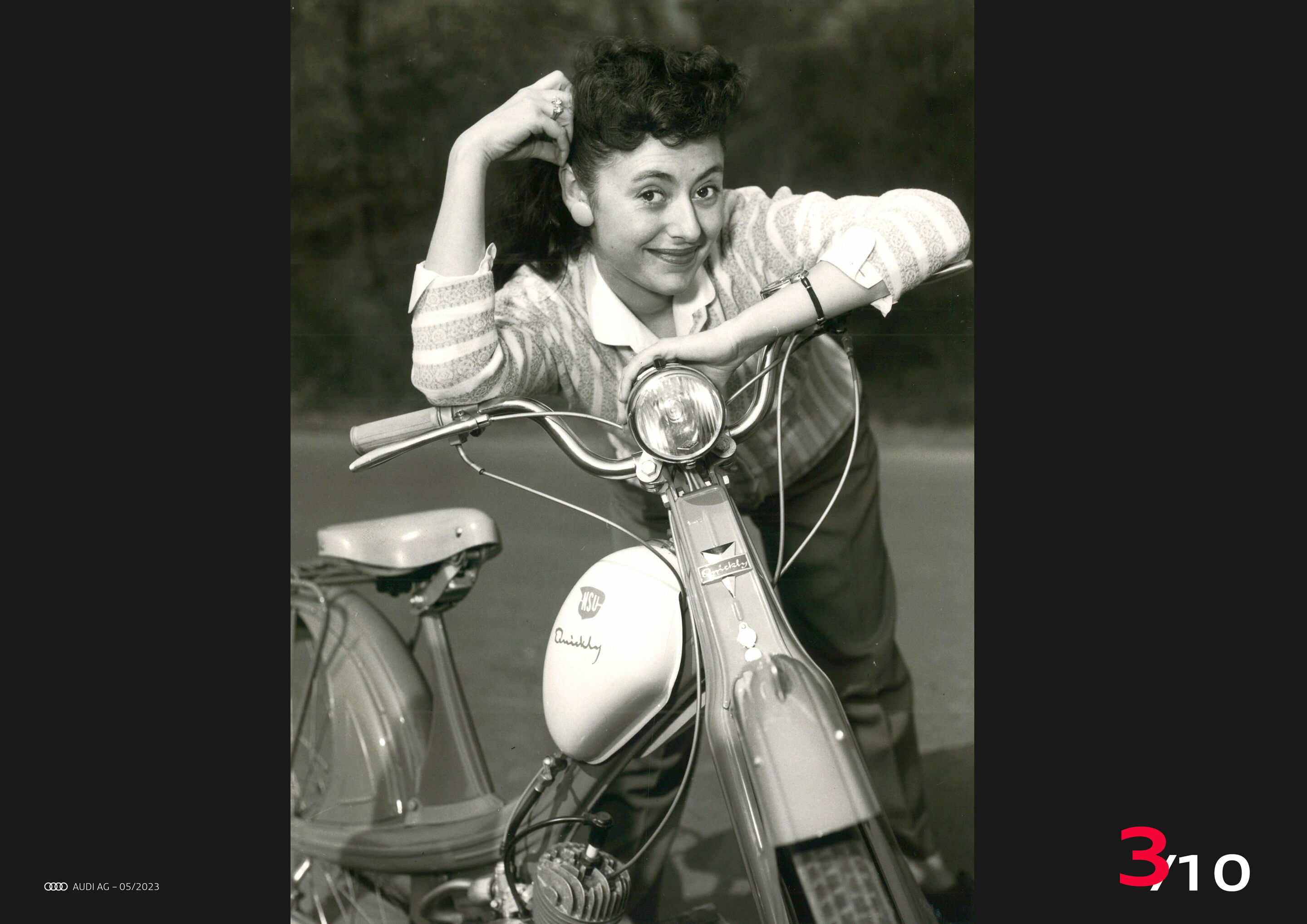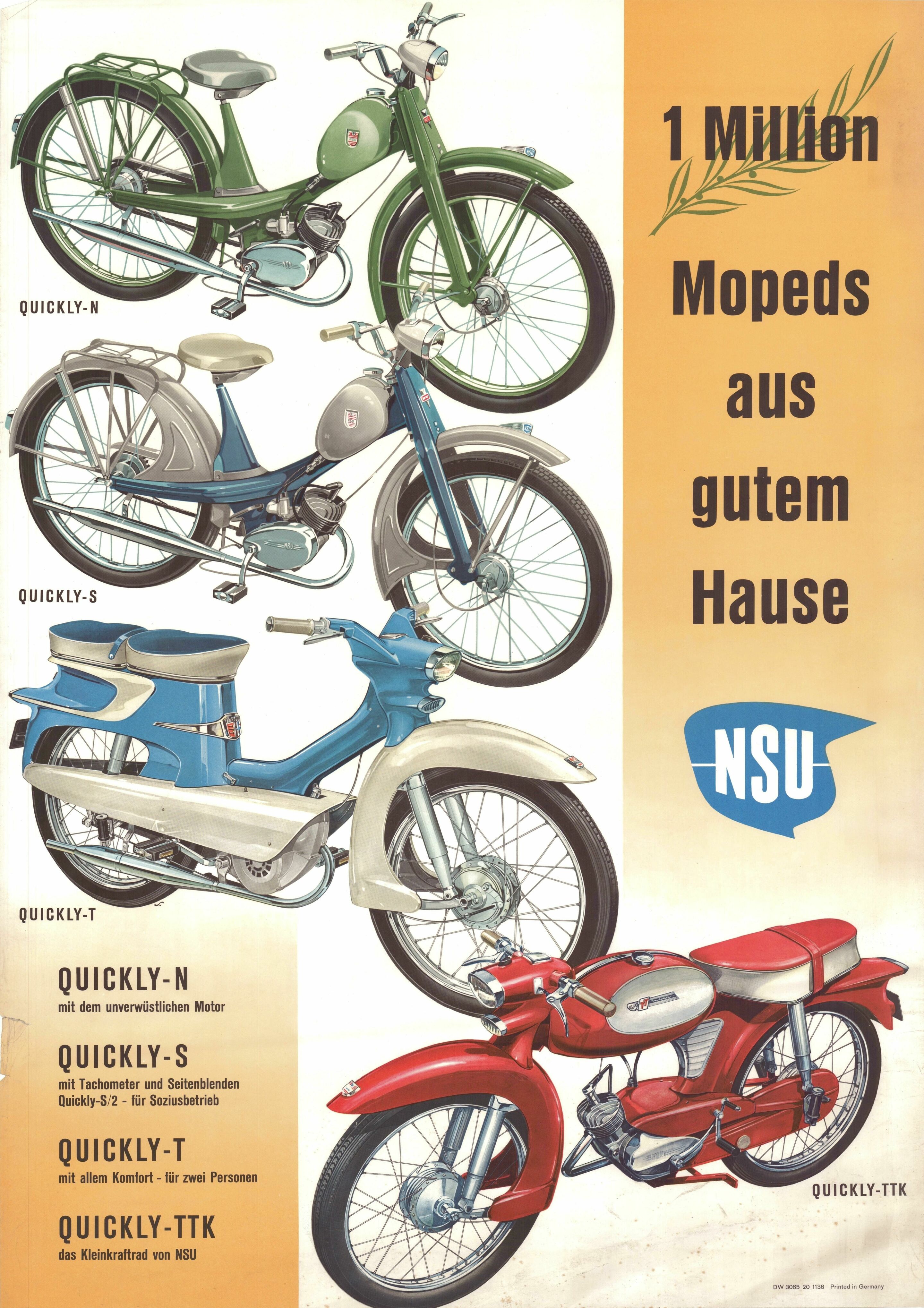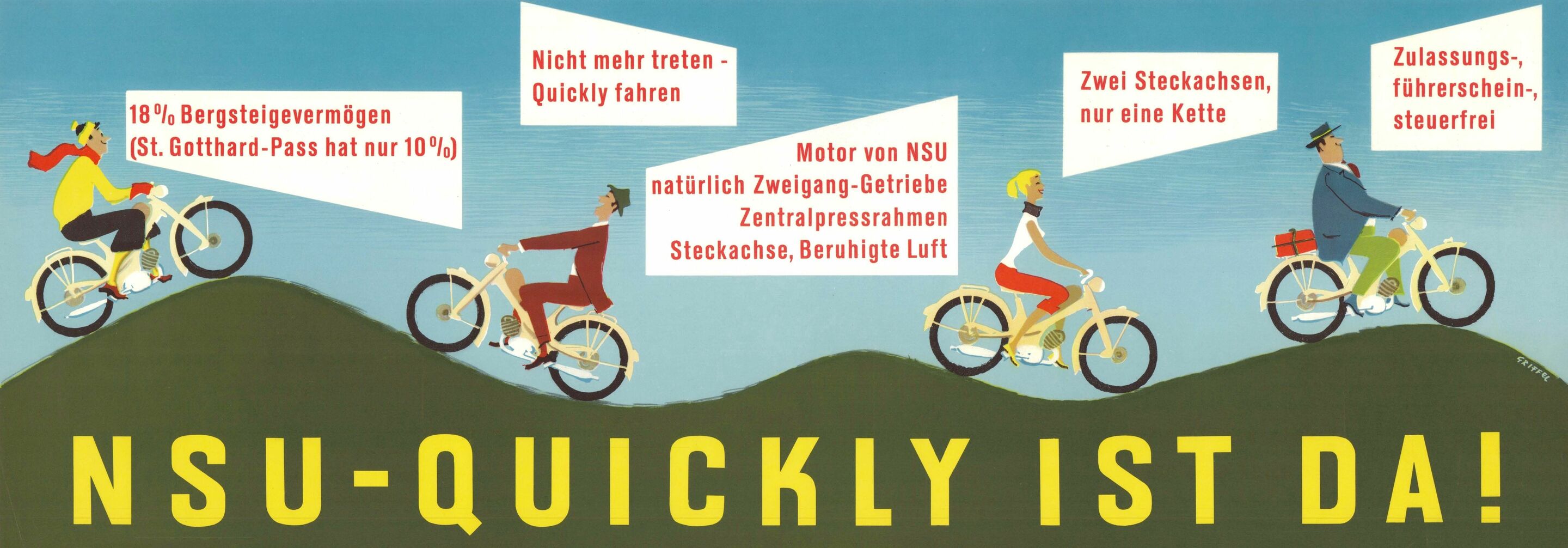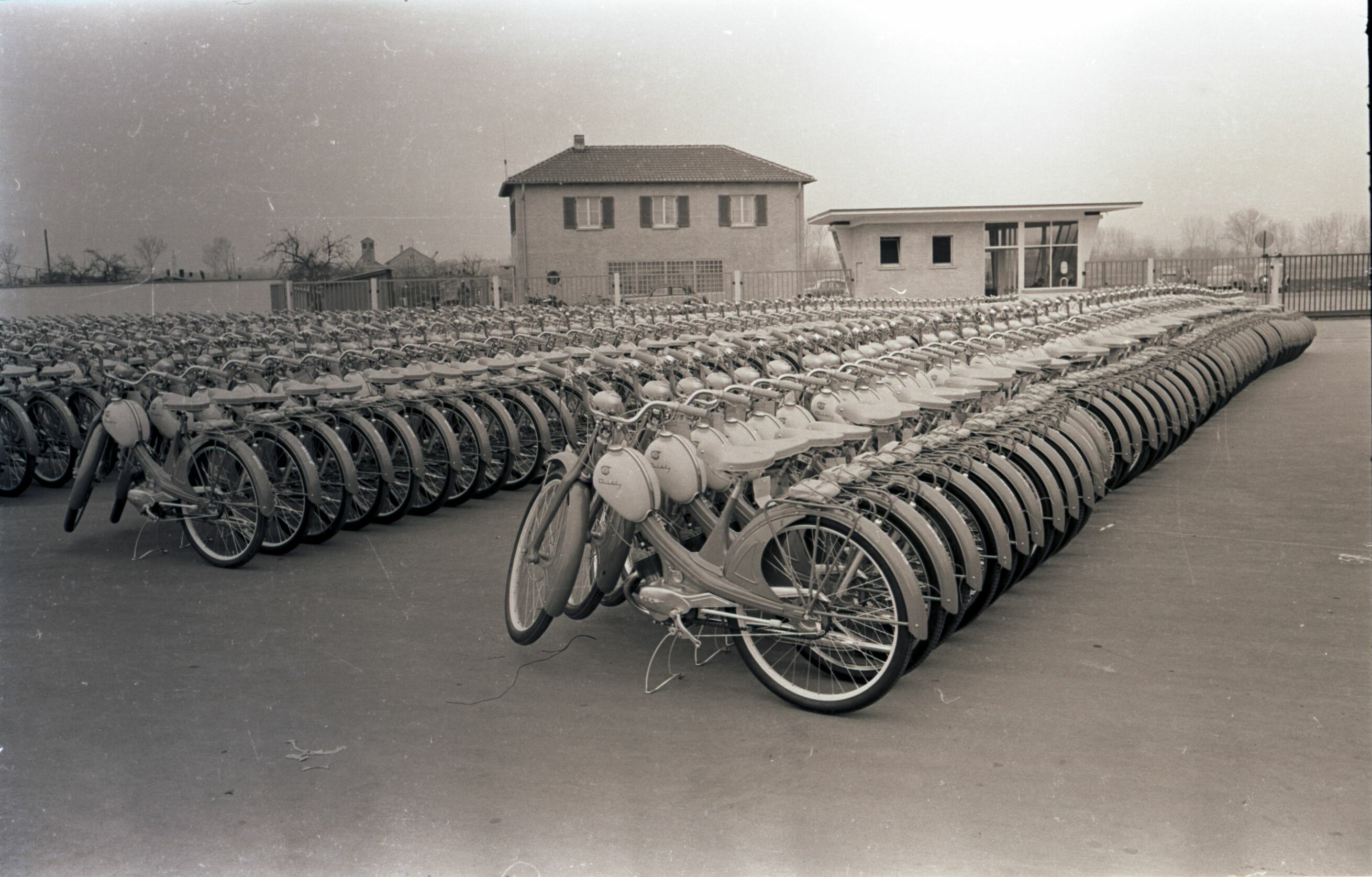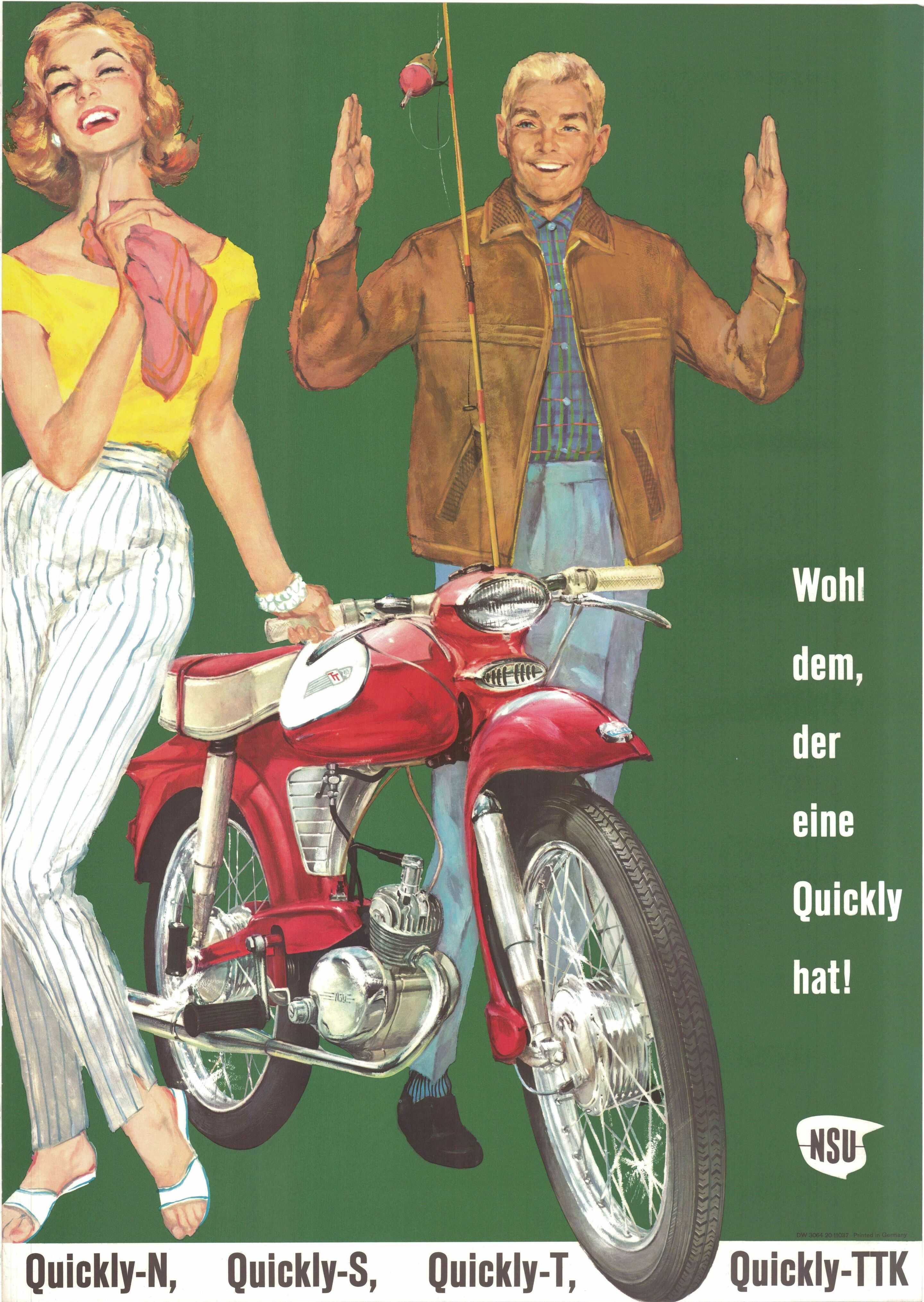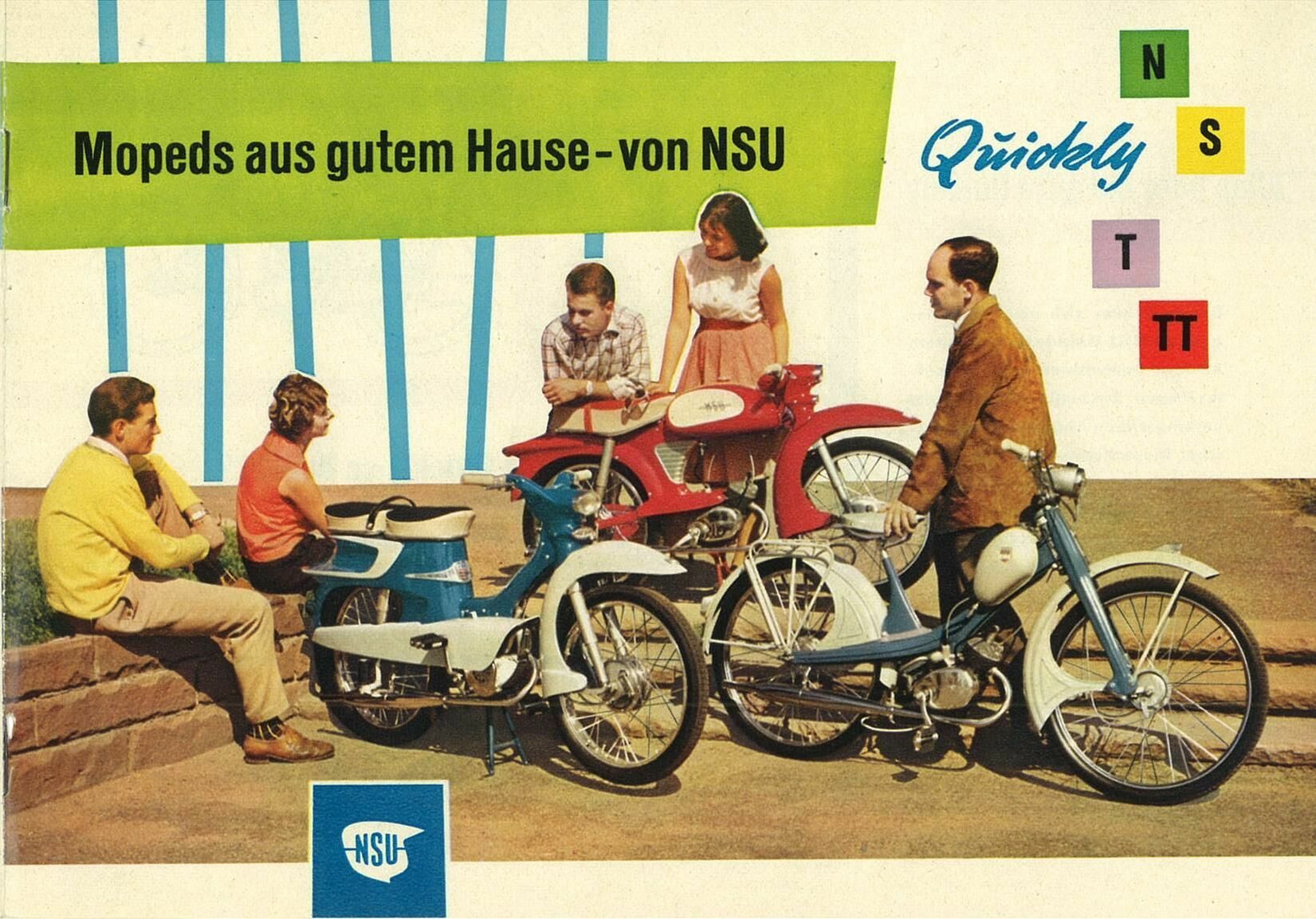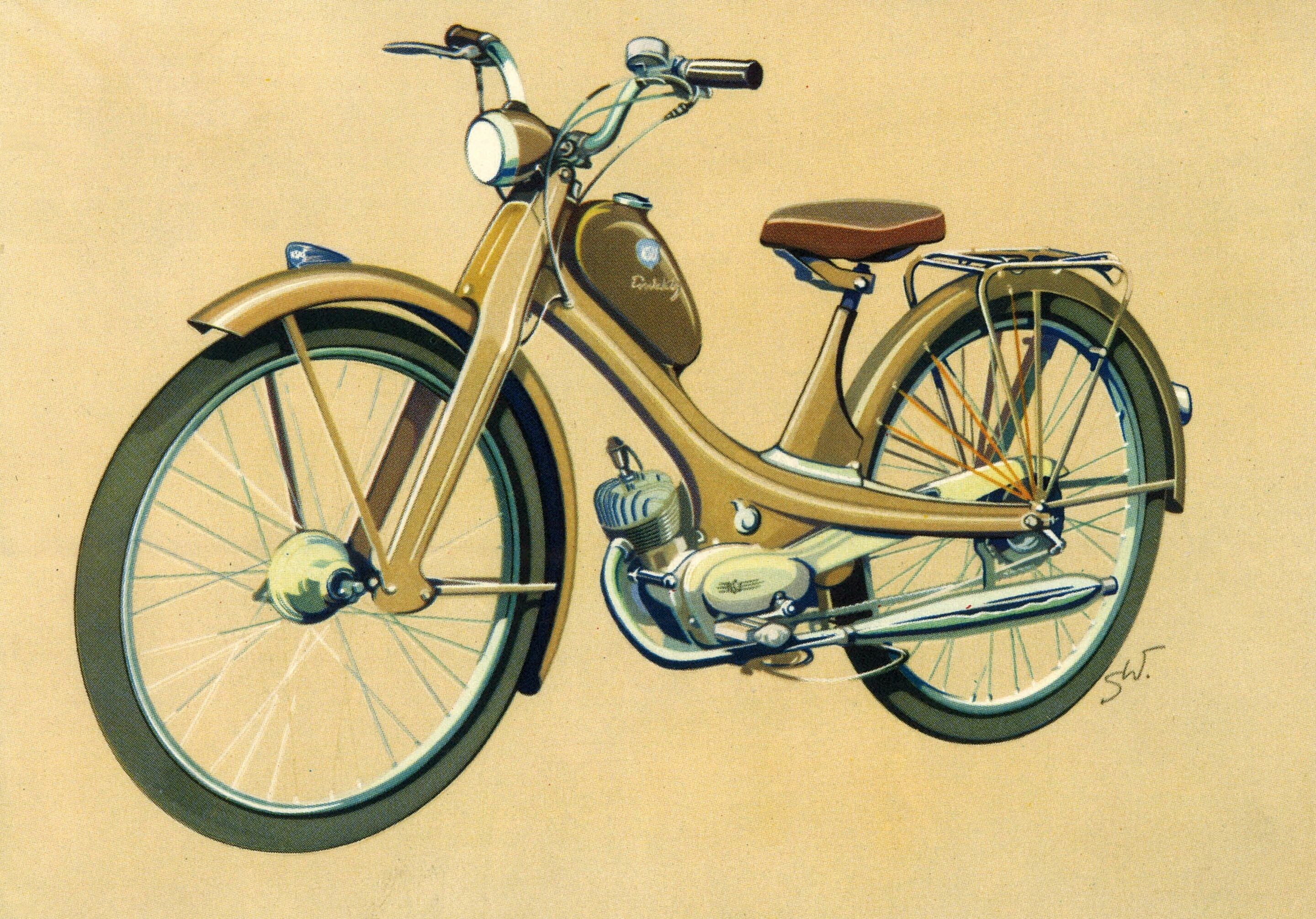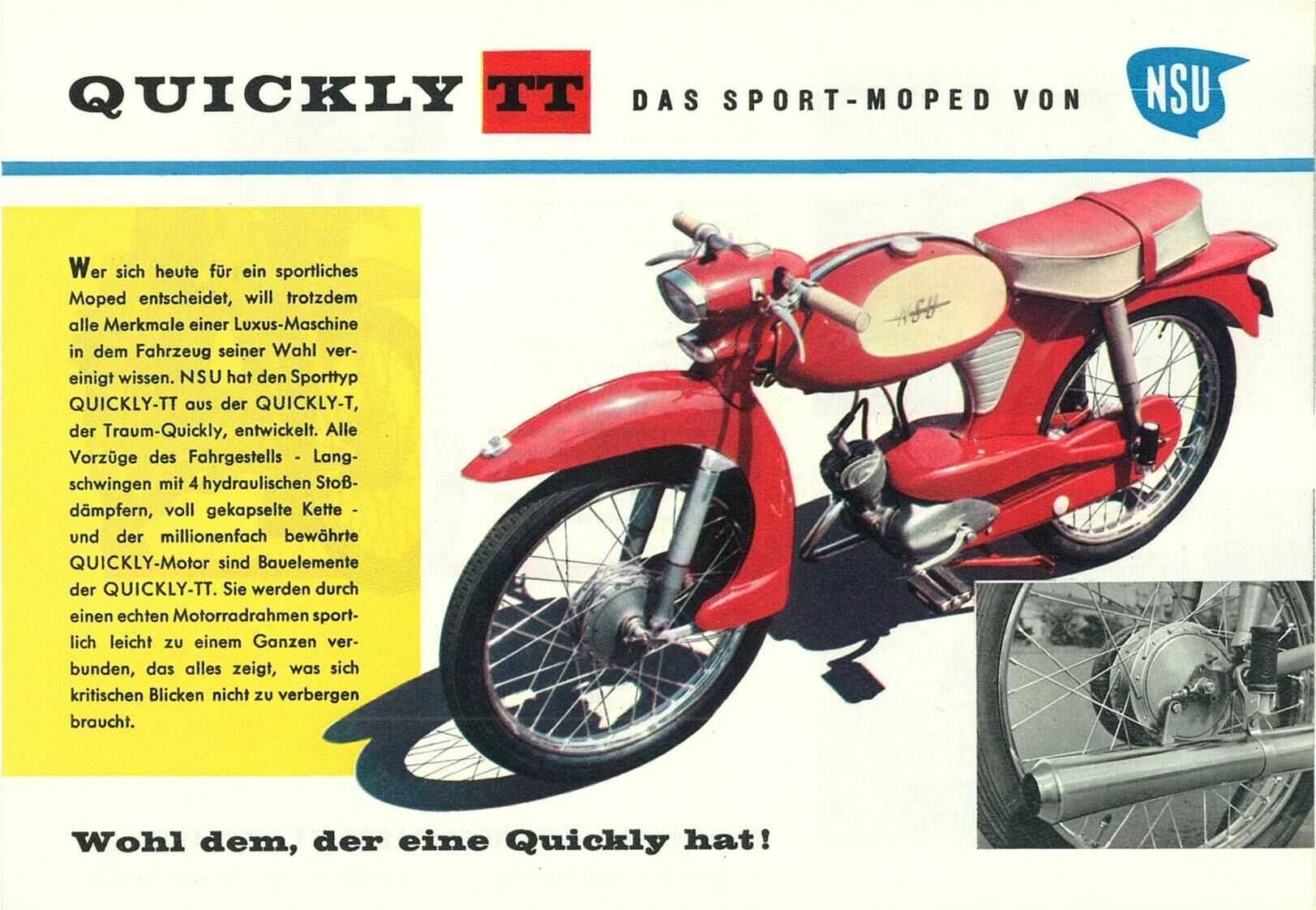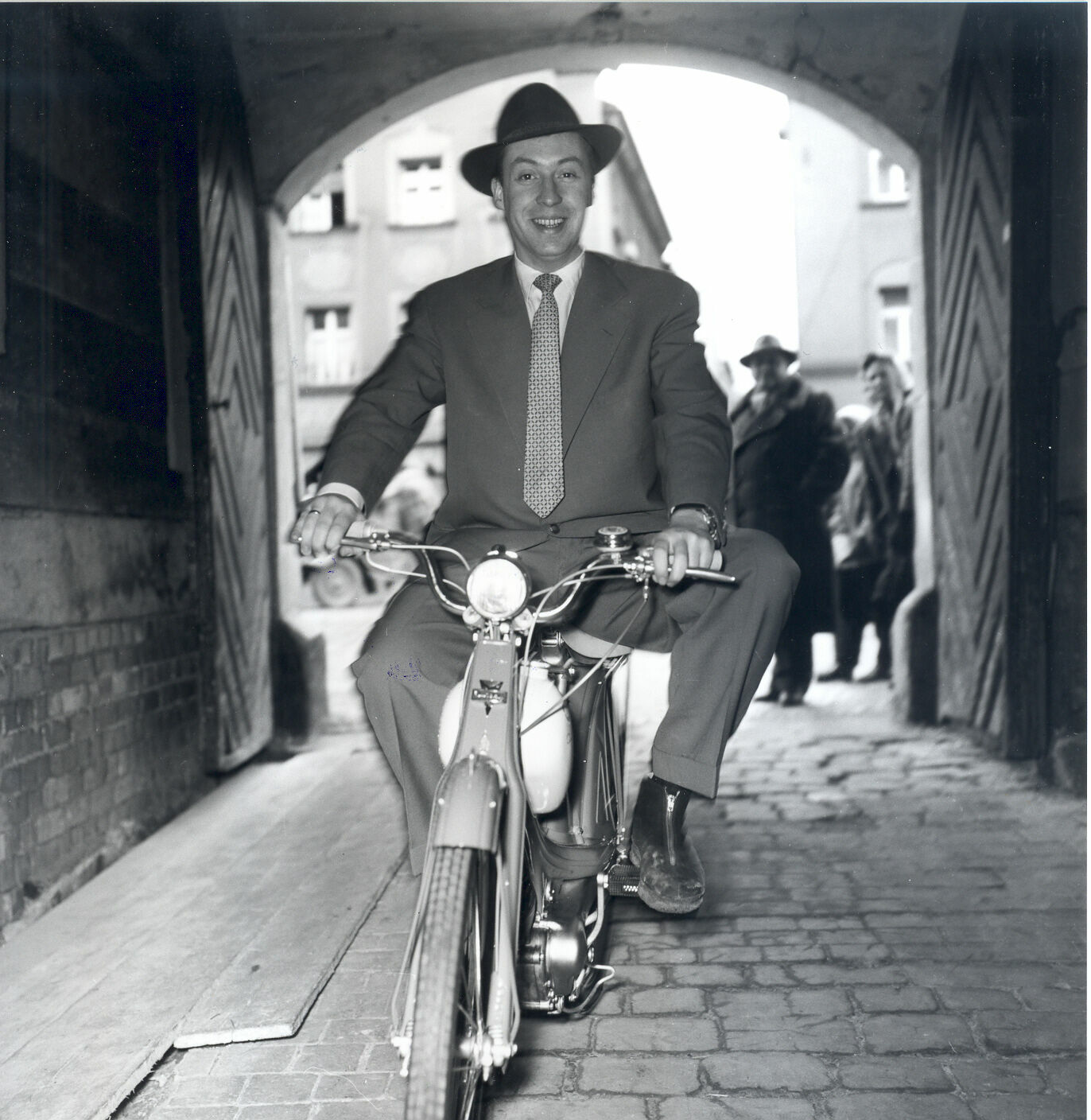“Nicht mehr laufen, Quickly kaufen”: the NSU Quickly
- Seventy years ago, the popular two-speed moped was launched
- 150 years of the traditional brand NSU: Series with classics and one-of-a-kinds from NSU’s model history – Episode 3
To many, it is a cult classic: the Quickly. This moped marked the Neckarsulm-based traditional brand NSU’s commitment to make mobility possible for everyone in the early days of Germany’s Miracle on the Rhine; starting in 1953, the company began to make the switch to motorized mobility tempting to people with advertising slogans such as “Nicht mehr laufen, Quickly kaufen” (English: Instead of walking, buy a Quickly). In the following years, many variants of the NSU Quickly were built, and the moped became hugely popular. In the 1980s, its popularity was rekindled thanks to the popular German television series “Irgendwie und Sowieso”: Actor Ottfried Fischer cut a fine figure on the moped as “Sir Quickly” in a white hat and trench coat, and the nostalgic series made the actor a household name in Germany. In this third episode on the history of NSU, Audi Tradition presents the moped.
October 1953: The International Bicycle and Motorcycle Exhibition (IFMA) was held in Frankfurt am Main. Following the devastation of World War II, Germany’s economy was again on the upswing. More and more people now wanted to ride from A to B and were increasingly able to afford it. In line with this trend, the Neckarsulm-based company introduced its latest development, the NSU Quickly, at the trade fair in Frankfurt: The two-speed moped was tax-exempt, did not need to be registered, and could be driven without a driver’s license. It was not until January 1, 1953, that politicians created the legal category for this new type of vehicle: motorized two-wheeled vehicles. Because a modern name was needed, the term “moped” was coined, derived from “motor” and “pedal”. Next to the NSU Quickly at the company’s pavilion, there was a large cardboard figure that bore the inscription: “Sebastian Latsch, the last pedestrian.” NSU’s ingenious marketing slogan of “Nicht mehr laufen, Quickly kaufen” became a catchphrase that was on everyone’s lips: “Blessed are those who have a Quickly.”
Alongside the company’s Fox, Lux, and Max models, the Quickly rounded out NSU’s range of two-wheeled vehicles, replacing the NSU Quick with its 98cc engine, which had been produced using pre-war technology from 1936 to 1953. As a result of the new legal classification, NSU decided to introduce a smaller entry-level model – and called it Quickly, taking its cue from the previous model. The moped was powered by a 49cc two-stroke engine with an output of 1.4 PS and a top speed of 40 kilometers per hour (25 mph). The new Quickly, which came in a two-tone Dove Gray / Light Gray finish was light, weighing in at just 42 kg (93 lb). At launch, the base price for the NSU Quickly was 525 German Marks, which was equivalent to about 1.5 times the average gross monthly wage in Germany at the time. A luggage rack, safety lock, and air pump ran an extra 15 Marks. Later, when other Quickly model variants came on offer, the base Quickly was given the suffix “N”. Its sales figures demonstrate how the NSU Quickly marked the transition to motorized mobility for many people: After production began, NSU was quickly unable to meet demand, even though the factory reacted by increasing daily production to around 500 units; later, NSU produced an average of around 1,000 Quicklys each day.
A range of model variants: from NSU Quickly Cavallino to the NSU Quickly TT
In 1957, NSU launched another variant of the Quickly model: the Quickly Cavallino. The name hinted at “la dolce vita” and promised buyers an Italian outlook, which was reflected in the Cavallino’s sporty, elegant lines, open tube frame, and all-red finish. The model was chic for everyday use and boasted just the right style for trips to the country that embodied Germans’ sense of longing back then, Italy – for example, to the NSU Lido campsite founded near Venice in 1955. Whether all of the 21,500 Quickly Cavallino buyers really made the difficult trip through the Alpine passes however has not been historically confirmed. In 1959, the Quickly model range expanded to include the Quickly T, also known as the Dream Quickly (“T” for the German word “Traum” meaning “Dream”). In the fashion of the time, it came with sheet metal cladding, fan cooling, and rear wheel suspension. In 1960, the sporty NSU Quickly TT hit the market, followed a year later by a revised version with kick-starter, the Quickly TT/K. NSU chose the abbreviation “TT” in reference to its racing successes at the Tourist Trophy on the Isle of Man: in 1954, the brand had taken 1st to 4th place there in the lightweight class up to 250cc. Meanwhile, with prosperity in Germany still on the rise and the population’s mobility needs changing, NSU responded by concentrating primarily on making cars from the end of the 1950s. Production of the popular moped from Neckarsulm came to an end in 1966 after around 1.2 million units had been made.
Each month until December, Audi Tradition is presenting a different NSU model, including brand classics on both two and four wheels, prototypes, and one-of-a-kind models. If you want to delve deeper into the history of the NSU Quickly, we recommend the Audi Tradition Edition book “NSU Quickly. Alle Modelle + Quick 50”, written by Klaus Arth and published by Johann Kleine Vennekate Verlag, Lemgo in 2014.
